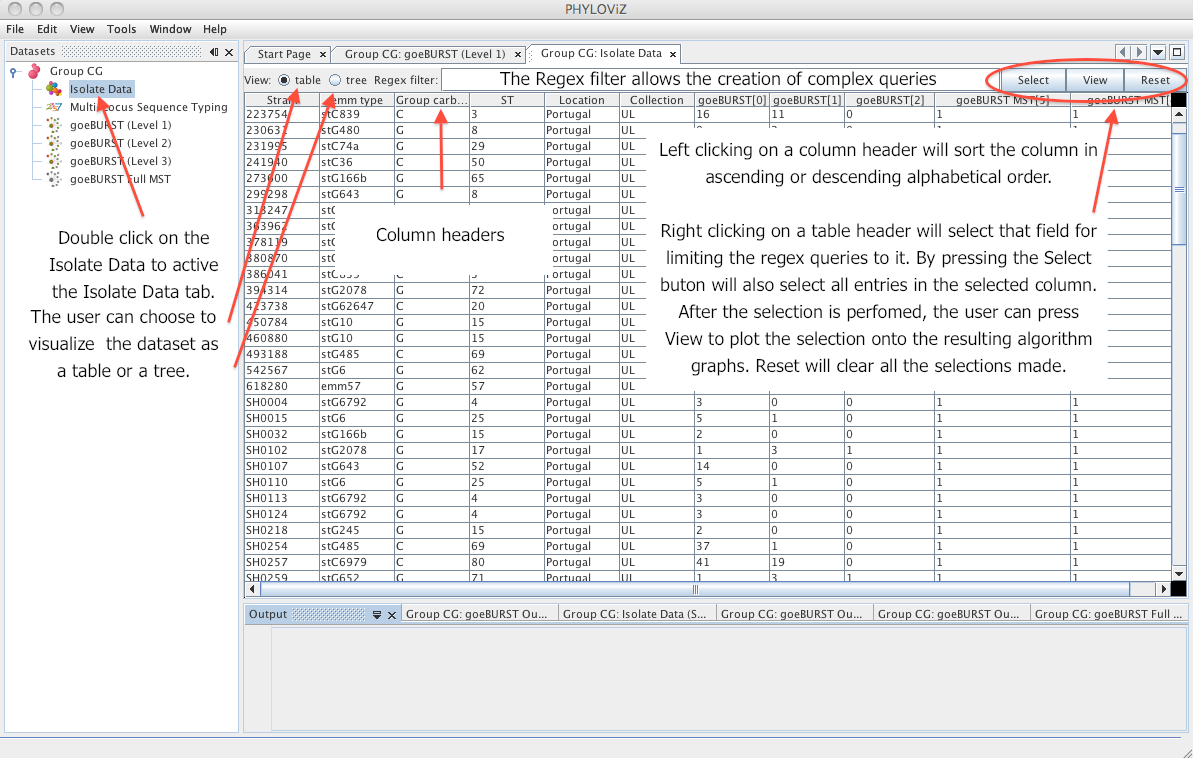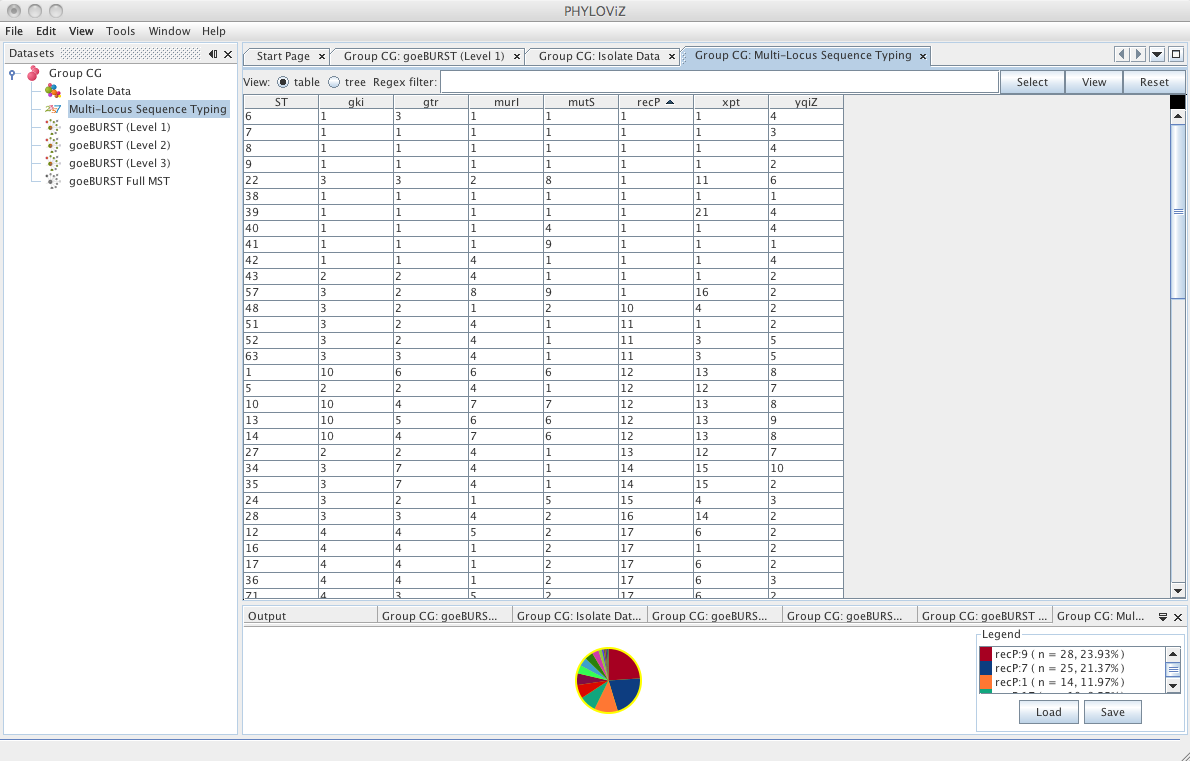| 1. Download Phyloviz | 2. Loading Data | 3. Running the Data Analysis algorithms | 4. The PHYLOViZ Display Interface | 5. Querying and Visualizing the data |
5. Querying and Visualizing the data
5) Querying and Visualizing data
The main goal of Phyloviz is to provide a data visualization tool for the users overlay accessory data on the data analysis algorithms result, in order to validate it, or to allow the proposal of new hypothesis. This section will explain the basics on how this can be achieved in our software. To query the data the user has the choice of using regular expressions, or simply manually selecting the desired fields from the table or even just use the checkboxes in the tree view. Using your dataset and this instructions you should be able to create visualizations similar to the ones found in the Screenshots section
5.1) The Isolate Data tab
5.2) The Typing Data tab
5.3) Regular expression primer
Some basic regular expressions that can be used in Phyloviz. For more complex expressions there are extensive tutorials on regular expressions online. Just search Regular Expression or regex.
- . (period mark)- represents any character.
- [ ] (square brackets) - Match anything inside the square brackets for one character position once and only once. Examples: [40] will match any field with 4 or 0; [7-9] will match any field will 7 ,8 or 9 ( '-' is the range separator);
- ^(caret) - Starts with. Ex: ^P will give you all the fields that start with a P. Inside the square brackets means negation. Example [^a-c] means anything not a, b or c.
- $ (dollar sign) - Ends with. Ex. 7$ will give you all fields that end in a 7
- ? (question mark) - Matches the preceding character 0 or 1 times only. Example: colou?r will find color and colour
- * (asterisk) - Matches the preceding character 0 or more times. Example: tre* would find tree, tread and trough.
- + (plus) - Matches the preceding character 1 or more times. Example: tre+ would find tree, tread but not trough.
- {n} (any integer between brackets) - Matches the preceding character exactly n times. Example: AT[GC]{2} would match ATGC, ATCG,ATGG or ATCC but not ATGA.
REGEX example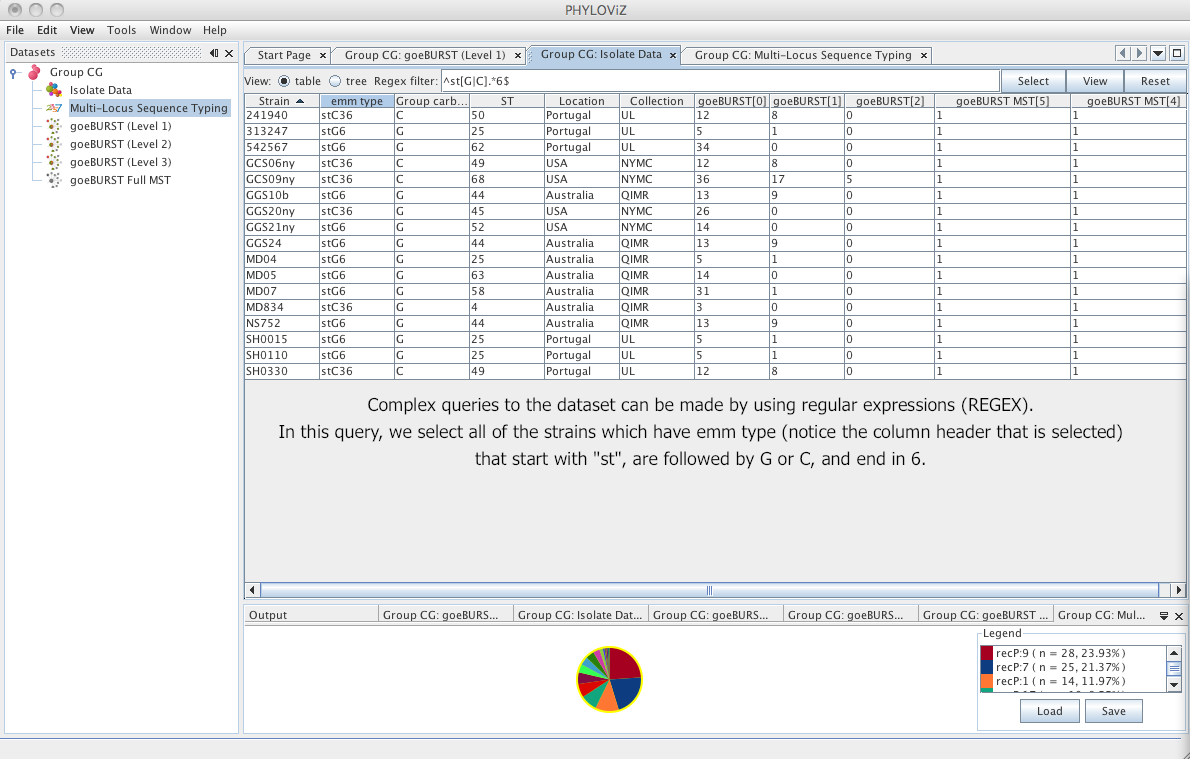 |
5.4) Queries using the Table view
In the Table view of the Data tab you can manually select any field you want to represent by left clicking on it. That will automatically display all the entries with the selected value and not only the selected ones. To select multiple fields you can press the CTRL key (or CMD on Mac) while clicking on the desired fields. If you keep the SHIFT key pressed you can select ranges of cells.
You can also automatically select multiple columns by clicking with the right mouse button on the table headers and pressing the Select button.
Finally to plot the data on the Display tab, press the View button, after all the desired selections are performed.
Click on the screenshots to see an example of querying.
Table view with selections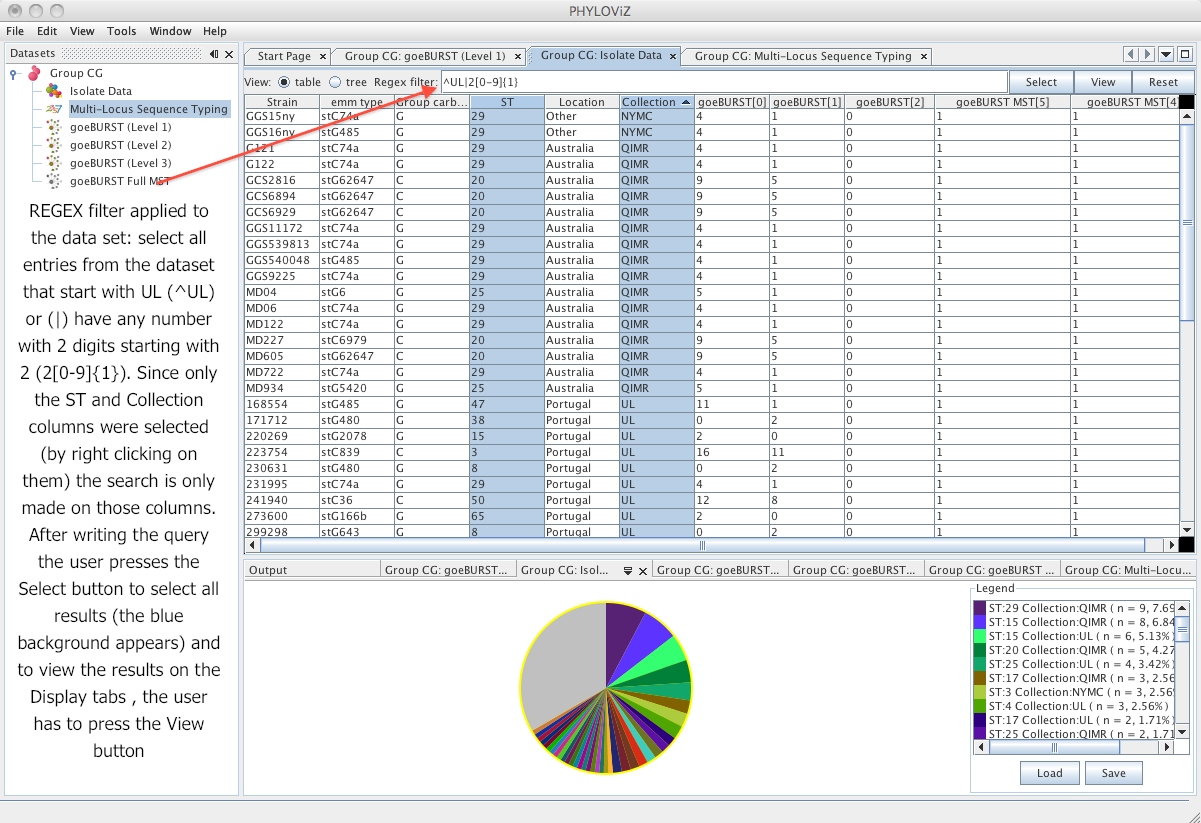 |
Query Results Chart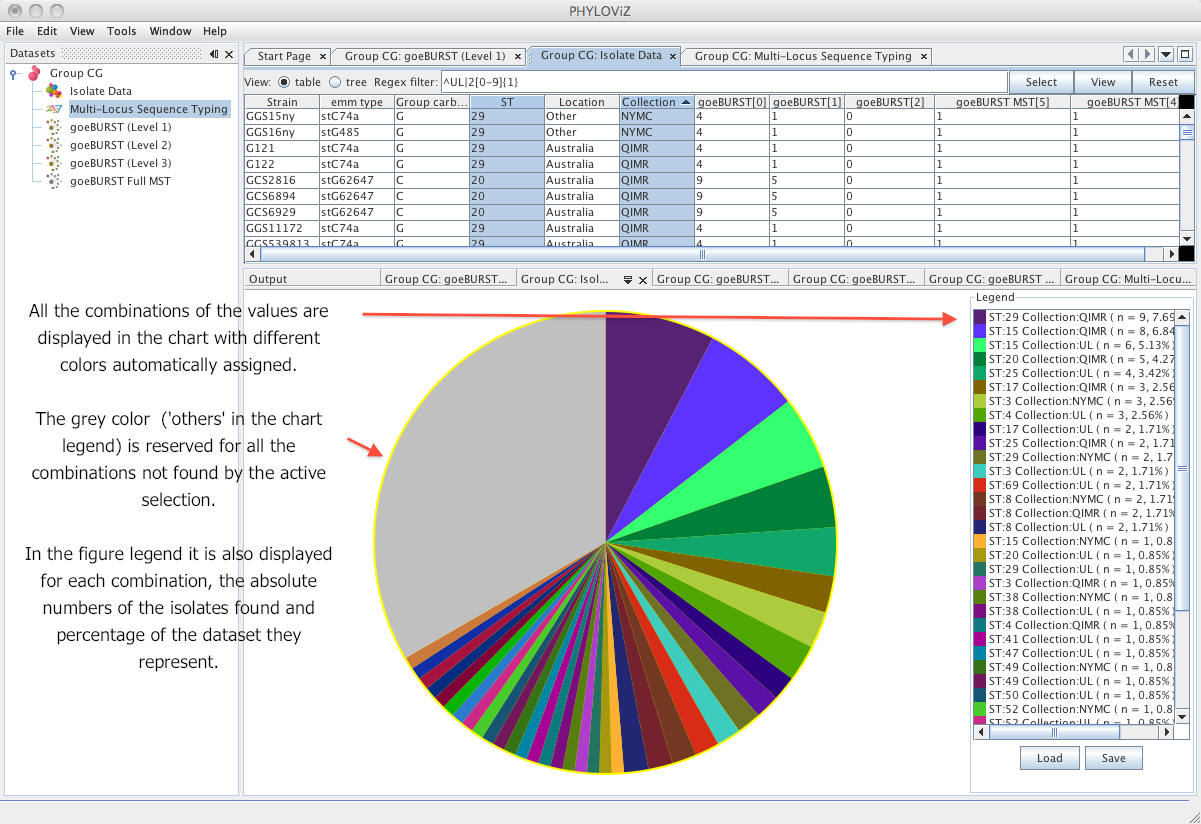 |
Results on Display Tab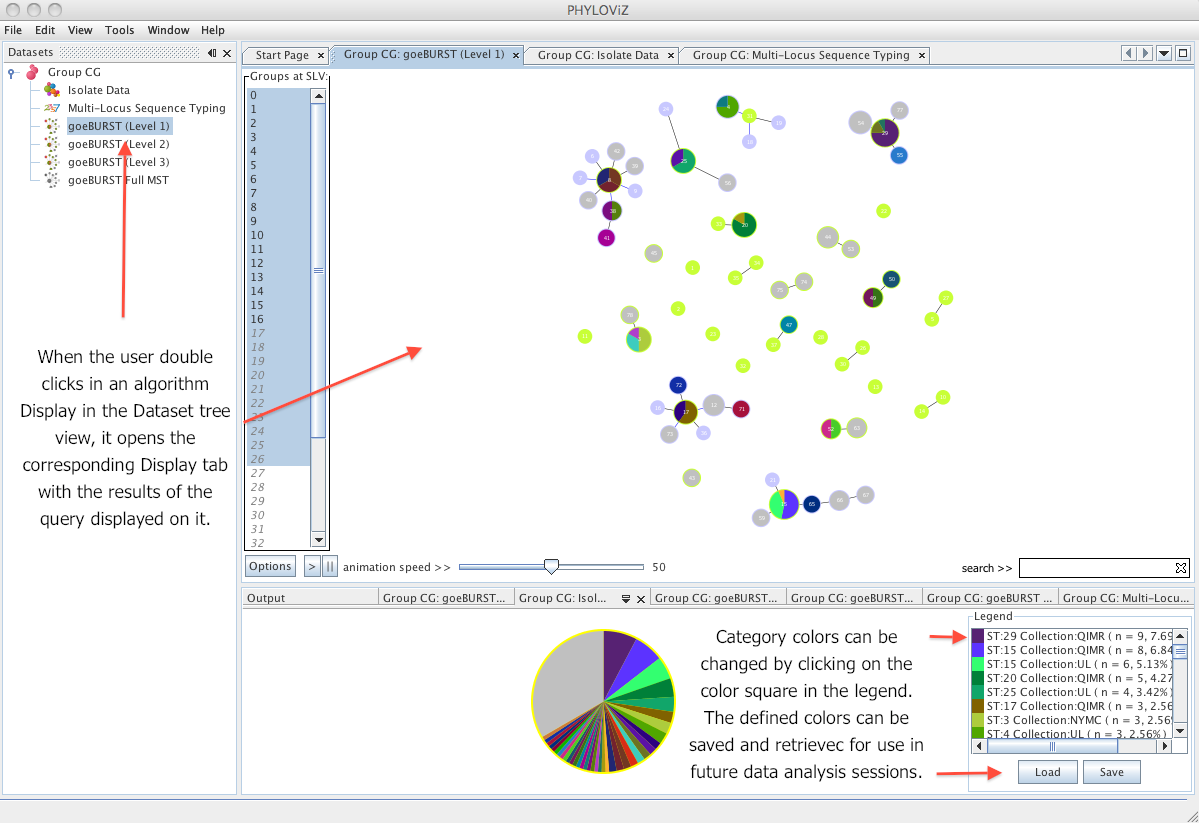 |
5.5) Queries using the Tree view
The Tree view offers a faster way to create simple queries. The user can also use the regex filter to search the dataset but all the possibilities for each dataset column are automatically indexed in a tree like manner. By pressing the Select button and switching to Table view the user can see the resulting selection. The users can alternate both views (Table and Tree) at will for creating the selection.
Click on the screenshots to see an example of querying.
Tree view with selections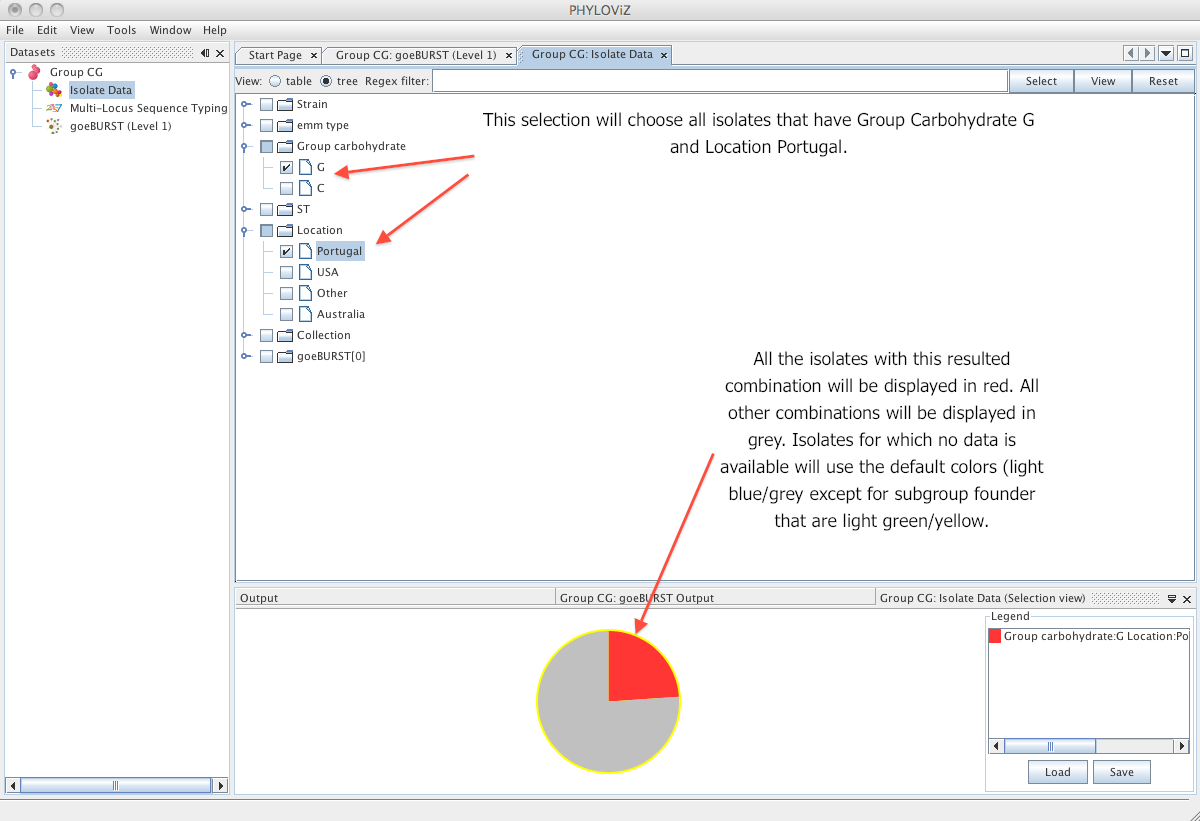 |
Results on Display Tab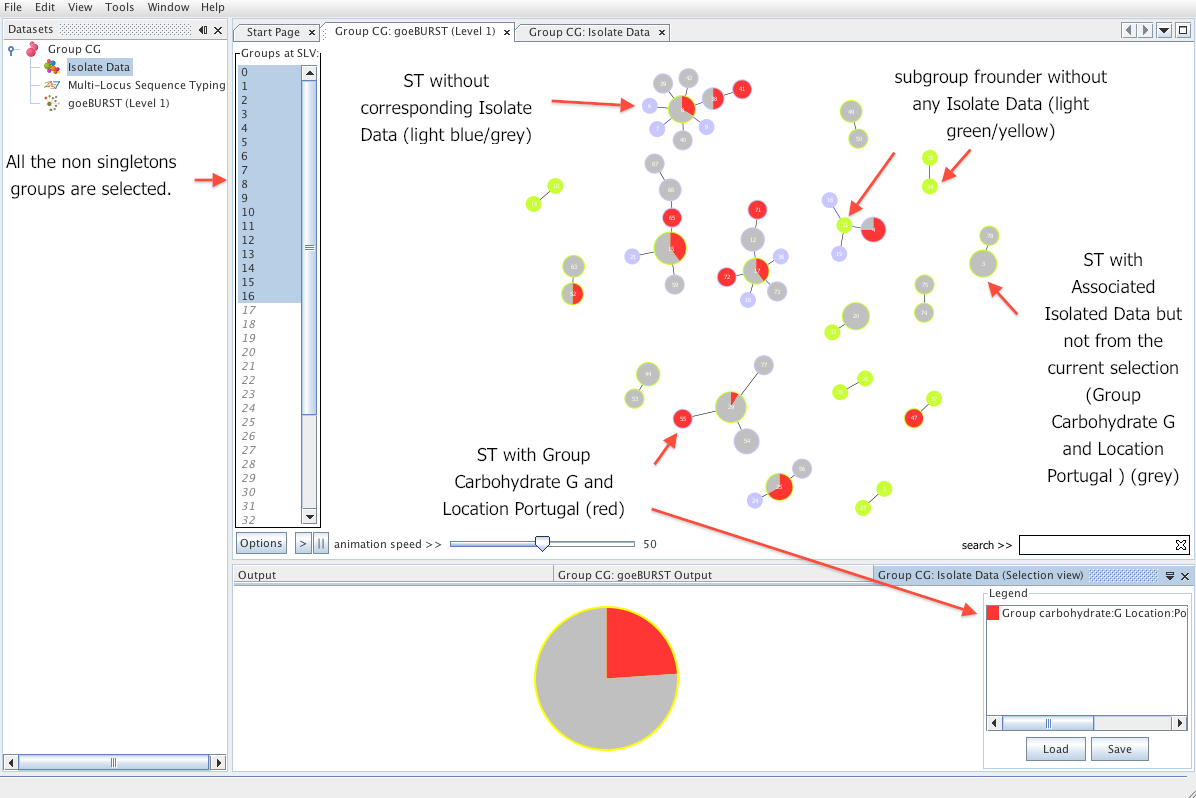 |
5.6) Exporting the results to an image file
To export the resulting graphs to an image file. Click on the Options button and choose Export. Select the adequate file format for the intended purpose. We recomend the use of png images for presentation quality and eps for publication quality.
Export |
| 1. Download Phyloviz | 2. Loading Data | 3. Running the Data Analysis algorithms | 4. The PHYLOViZ Display Interface | 5. Querying and Visualizing the data |



